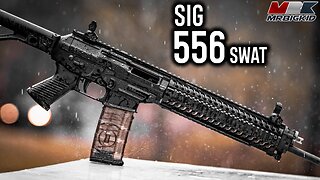Premium Only Content

Guide To DIY Bike Repair And Maintenance
The Complete Guide To DIY Bike Repair And Maintenance
WANT TO LEARN BIKE MAINTANCE THEN CLICK HERE FOR DIY BIKE REPAIR VIDEOS http://bit.ly/3U6RkXT
There’s a feeling we all get when the trails are caked in mud and the ferns dripping like rain. Our inner child emerges and mountain biking becomes a whole lot more exciting. We return from a day of riding with dirt flecked grins and bikes in a matching brown.
Though unfortunately, our mountain bikes aren’t so happy after a day of smashing them through the sodden trails. Cleaning and maintaining your mountain bike is so essential, not only are they exposed to some nasty weather, but we send them down some gnarly terrain.
It’s a surprise these bikes can function after such a beating, let alone perform at their optimum time and time again.
But the reality is, who the hell wants to pay exorbitant prices each time they need their bike serviced?
If you’re serious about mountain biking, it’s time you learned the basic bike repair and maintenance tasks so you can save your money for your next upgrade.
I won’t lie, not all bike repairs are easy. And not all can be done at home, but if you show your mountain bike a little love and care, you can avoid most visits to the mechanic and increase the longevity of your bike.
WANT TO LEARN BIKE MAINTANCE THEN CLICK HERE FOR DIY BIKE REPAIR VIDEOS http://bit.ly/3U6RkXT
These are some things you can do to keep your bike happy and your pockets full.
I just want to send a massive shout out to both GMBN and Park Tool for putting together a massive amount of helpful videos for everyone to learn and benefit from! And it’s these videos that I have used below to assist in explaining the bike certain DIY bike repair tasks.
Sending a big whip over a big step down at Stromlo MTB Park mountain biking in Canberra
Table of Contents
Cleaning Your Bike
Ok, this first one is obvious and you may think it not necessary to discuss. But if you learn how to clean a bike correctly, you mightn’t need to know how to fix a bike as a result.
If you neglect your bike, over time dirt will work itself into all of the wrong places causing components to wear and fail a hell of a lot quicker than usual.
And through the simple act of cleaning, you’d be surprised with how many mechanical problems you can find and address before they become bigger bike repair issues.
So how do you clean a mountain bike?
I’m going to start with what not to do…
Do not grab a high-pressure washer and try to blast the mud off. In doing so, there is a chance you’ll blast more than just dirt. Using high-pressure washers can force grease out of the bearings, resulting in them failing prematurely. And in extreme circumstances, can cause irreversible damage to seals.
All your bike needs is a light spray from a garden hose to remove any caked-on mud. And if the trails are bone dry, you can skip the hose entirely and start with the next step…
Remove Wheels – Using a bike stand, suspend your bike off the ground at a comfortable height and remove both front and rear wheels. This allows for easier access to the hard to reach areas of the frame, while also making it easier to clean your wheels.
If you don’t have a bike stand, don’t stress, flip your bike upside down so it’s resting on the seat and handle bars.
WANT TO LEARN BIKE MAINTANCE THEN CLICK HERE FOR DIY BIKE REPAIR VIDEOS http://bit.ly/3U6RkXT
Brush Off Loose Dirt – Grab a brush and wipe away as much of the dirt as possible. Utilise as many different shapes and sizes as you want to get into all the nooks and crannies. Heck, get the toothbrush out if you feel the need.
I find that in most cases, the dust and dirt will fall off with ease – mud excepted. This is where the hose will come in handy, and if you chose to spray your bike down, you can miss this step.
Brushing down a mountain bike while cleaning to avoid any bike repair and maintenance
Apply Bike Wash – Use any old spray bottle to apply bike wash directly to your frame. Generally, a mix of warm water and mountain bike-specific bike wash works best.
Wipe The Bike Clean – Using a soft cloth or rag, wipe your bike down from top to bottom. Make sure to get into all of the crevices surrounding your bearings, linkages, and suspension. Focus with great detail on the derailleur and chainring as you want to clear all of the gunk from your precious drivetrain components.
Polish The Frame – Here’s where you need to take care. Polish is great, it’s what creates the wow factor and makes your mountain bike shine, but get it on your brakes and it’s game over for your brake pads. The easiest way to implement the polish is to spray it on a clean rag and wipe it over the bike. This reduces unwanted spray.
Clean Your Wheels – Following the exact same method as above, minus the polishing step, brush and wash down your wheels. Make sure you give your cassette a healthy soaking and scrub it with a hard bristle brush before wiping it clean with a rag.
I generally steer clear of the brake rotors, but if you get a bit of bike wash on them don’t stress, it won’t affect your pads like polish. But if you really want to wipe them down, isopropyl alcohol (rubbing alcohol) is your best friend.
Clean and lube Your Chain – The final step is to remove as much dirt and grime from your chain as possible and it’s as easy as ever. Re-install both wheels and shift to a mid gear. Using a rag soaked in isopropyl alcohol, pedal the chain backwards and firmly rub down the chain. Make sure to contact each side of the chain and clean as thoroughly as possible.
The chain will dry up rather quickly and then it’s time to lube it. Pedal the chain backward once again and this time, apply your chain lube. After you’ve given it a healthy dosage, wipe the excess off with a rag and you’re good to go.
There are specific chain cleaners out there but, to be honest, a rag and rubbing alcohol does as good a job as any. So save your hard-earned cash.
how to apply chain lube on a mountain bike to avoid any bike repair and maintenance tasks
Inspect And Maintain Your Bike
Inspecting your bike should become a ritual every time you clean it and before you ride. Most of us take these machines for granted and just expect they will perform to their fullest potential time and time again.
But what if it doesn’t? What if something fails when you’re flying down a gnarly descent?
That thought alone is enough to scare me into checking over my mountain bike regularly. And it should be for you too.
You’ll be surprised what you can pick up visually, if you pay attention. You’ll most likely come across loose or broken components in the cleaning phase, but in case you missed something, here is where you need to look at the finer detail.
And the best part, these checks will only take up 5 minutes of your time.
There are many things that can go wrong on a mountain bike, but with basic bike repair skills, you’ll be able to pinpoint and narrow down the problem.
Mat Walker looking calm and collected on Air Ya Garns big jumps in Blue Derby Tasmania
Check Tightness Of Bolts
Over time, under the harsh conditions we put our beloved mountain bikes through, it’s not uncommon for screws and bolts to work loose. It’s just physics.
But there is a simple task that we can do to reduce the risk of losing a bolt on the trails – and perhaps save a massive bike repair job.
Check the tightness of screws and bolts.
You don’t need to check every single screw every single day, a little bit of common sense has to come into the equation. But checking over the main bolts, ones under the most duress, should indeed become second nature and these include:
Axles
Main Pivots
Cranks
Rear shock mounts
Headset and handlebars
Derailleur mount
Shifter mounts
In the process of checking your mountain bike’s bolts, take care not to overtighten them. In doing so, you may strip the head of the screw and cause a massive headache.
WANT TO LEARN BIKE MAINTANCE THEN CLICK HERE FOR DIY BIKE REPAIR VIDEOS http://bit.ly/3U6RkXT
You don’t need to apply excessive force to check the integrity of the bolt, just a quick firm pinch is more than enough. If the bolt doesn’t move, it’s tight enough. If it moves under a small amount of force, you’ll need to tighten it to an appropriate level. Most screws will have a preferred torque setting displayed which should be used as a guide for tightening.
In the case you find a loose bolt, make a mental note and next time around be sure to thoroughly test the same one.
This is a basic procedure and one that can be performed by anyone.
DIY Bike Repair and maintenance header
Check Your Gears Are Shifting Properly
Sure, you can put up with imperfect shifting, but what you’re actually doing is far worse than you think. Grinding through gears will wear your drivetrain components at an exponential rate.
When your gears shift swiftly and accurately, minimal stress is placed upon the chain and other wearing parts. But when your chain drags or skips between gears, more force is placed on each component with each impurity, causing them to wear faster than they should.
Your cassette, chain, and chainring’s life can be reduced drastically, so getting your shifting back on track should be of the highest priority.
There are many reasons your gears may be shifting poorly but, through my experience, here are the most common faults…
Sram X01 drivetrain mountain bike
Reasons Your Gears Could Be Shifting Poorly
Bent Derailleur Hanger
Perhaps the most common cause of improper shifting is a bent derailleur hanger. And if you have no idea what I’m talking about, don’t stress – this is an easy one.
The derailleur hanger is a small alloy component, unique to each bike model, that connects the derailleur to the frame. This is used to set the exact location of the derailleur for efficient shifting.
These hangers are made from soft, easily malleable material so that in the event of a crash or hit, the hanger will bend instead of the derailleur. This is super beneficial as a derailleur is bloody expensive!
To check if your derailleur is bent, the easiest method is to eyeball it. Looking straight down over the cassette, you should see a perfect straight line between the cassette and derailleur. If you don’t, you’ve most likely bent your hanger.
Inspecting a derailleur for correct cable tension while checking for bike repair tasks
To straighten your hanger, remove your derailleur and use a large shifter or multi-grip tool to slowly bend it back into position. There are hanger tools that are designed for this exact procedure and they do make the job easier, but they are expensive and, in most circumstances, not worth it.
I’ve had success with a shifter many times, it may not be perfect but it’s close enough for my drivetrain to run smoothly again.
The best part about a hanger is if you fail at getting it straight, a replacement will be cheap and generally easy to come by. Just be sure to buy the correct one!
Incorrect Cable Tension
Over time and for no apparent reason, you may notice your gears begin to shift very poorly. Don’t be too alarmed if this has started happening, it is normal wear and tear on a mountain bike.
Your derailleur operates via a small wire cable and over its life, this cable will begin to stretch. The most common symptom of a stretched cable is your gears beginning to skip and struggle to shift into a lower gear.
The best way to check for cable stretch is, again, to eyeball your derailleur. Only this time, look directly behind the cassette. If your cable has indeed stretched, you’ll see that the lower leg runs parallel to the teeth on the cassette – but not in line. If your lower leg is sitting slightly towards the next highest gear (towards the right), more tension is required on the cable.
Checking a bike derailleur for correct tension to avoid major bike repairs
To apply more tension to the cable, there is a simple barrel adjuster on the output of your gear shifter. Turning the barrel adjuster anti-clockwise will increase the tension on your derailleur and slowly shift it into the correct position.
The aim is to align it as best you can by working in small increments until you get that drive chain shifting swiftly again.
If you run out of adjustment on your shifter barrel, you can achieve more tension on the cable by releasing the locking screw on the derailleur and manually pulling the cable through. Just remember that the derailleurs are spring operated and if you release that screw with tension on the spring, it will quickly snap back and could severely injure your fingers.
If you reach this point on the barrel adjuster, it’s a good sign that the inner cable has reached its lifespan and should be replaced.
Drivetrain Components That May Need Replacing
If you can’t fix your gears with the above quick checks, you may need to replace a component or two. The two main components that will need to be changed is the inner cable and the chain. These are things you can do yourself…
How To Replace An Inner Cable
It’s not as difficult as you may imagine to replace an inner cable and as long as you’ve got a couple of tools, it can be done easily at home following these 10 steps.
Shift your gears to the highest gear (smallest cog) and relieve tension from your derailleur by pushing down on the bottom leg and engaging the clutch.
Undo the cable tension screw on the derailleur.
Remove the shifter from the handlebar mount and remove the top cover. Make sure it’s the correct side!! If you remove the bottom cover, the entire shifter assembly will fall to pieces and is almost impossible to put back together.
Use a small screwdriver to extract the nipple of the cable and then slide the old cable out, paying close attention to the cable routing on the derailleur and shifter.
Slide the new cable through the housing following the same route and leave plenty of length, you will trim the excess at the end. Make sure the inner cable is seated correctly before you put the cover back on and once you’re happy with its positioning, mount the shifter back onto the handlebar.
Wind the barrel adjusters all the way in. This allows you to add small increments of tension later to fine-tune the derailleur.
Firmly pull tension onto the cable by hand and tighten the locking screw on the derailleur. You don’t need to pull with all your strength, this will only result in too much tension on the cable.
Check to see if you can shift through the gears smoothly. Don’t stress if you can’t, no one gets it spot-on first go.
If your gears are shifting but need small adjustments, try winding the barrel adjuster out to achieve the correct tension. If you’re a mile out, you’ll need to loosen the derailleur screw and re-tension the cable by pulling more or less through.
Repeat the tensioning process until your gears all shift swiftly.
It can be a frustrating process but the best method is to be patient, make small adjustments and slowly get the derailleur shifting perfectly.
Gear Required To Replace An Inner Cable
Allen key
Small screwdriver
Inner cable
Cable cutters
How To Replace A Cable Housing
Sometimes the reason your inner cable is sticky and doesn’t work properly is due to a bad cable housing. Over time, dirt and dust can work their way into the housing, creating too much friction for the cable to slide smoothly.
Along with dirt, the metal section of the outer can sometimes be exposed to water and cause rust to build.
With any of these issues, the most common area affected will be at the extreme ends of the cable. So if the housing is long enough, you may be able to get away with just trimming the end and installing new end caps. But if that doesn’t work, a new housing is in order.
For frames with external cable routing, this job is simple. So I’ll explain how to replace an internally routed cable (a cable that runs through the frame).
There are several methods to join the two housings together, but I’ve found using Park Tool’s dedicated kit to work best.
Once the inner cable is removed (see steps above), the process to replace the outer cable is quite simple.
Remove the end caps from the housing.
Using the Park Tool IR1 internal routing kit, screw the end of the nipple into the top of your housing and tape it for extra security.
Make sure a solid connection has been made by giving it a firm tug. You don’t want the connection to pull apart in the middle of the frame.
Working with both hands, push and pull the housing through the frame until the old housing is completely removed and the routing cable is visible.
Take care not to yank at a snagged housing. Work the cable through as gently as possible.
Remove the old housing from the internal routing kit wire.
Install the new housing onto the end of the internal routing kit wire (following the same method as above). Again, test for a solid connection.
Gently pull the new housing through the frame until both ends have plenty of length.
Carefully measure the correct length and cut your housing to size.
Install the end caps and then continue to re-install the cable (see the above process of how to replace an inner cable)
Gear Required To Replace A Cable Housing
Internal cable routing kit
You can achieve this task without a dedicated kit, but the chances of success are far greater when using one.
New cable housing
Allen key
Small screwdriver
Inner cable
Cable cutters
How To Replace A Chain
Another component that is a common culprit for your gears shifting incorrectly is your chain.
WANT TO LEARN BIKE MAINTANCE THEN CLICK HERE FOR DIY BIKE REPAIR VIDEOS http://bit.ly/3U6RkXT
You may not think it, but the chain may well be the single most important part of your mountain bike. It is responsible for delivering power to your rear wheel and, in turn, propelling you forward.
The stress that is placed on a chain is ridiculously high. The power of your legs and mechanical leverage adds a huge amount of force, causing your chain to stretch over time. If it’s not replaced when this happens, the chainring and cassette can be damaged in the process. And in extreme cases, the damage could cause these components to fail when coupled with a new chain, meaning you’ll need to replace the chainring and cassette as well.
There are chain gauges to check your wear and these are relatively cheap, but if you don’t want to buy any tools, I’d suggest making it a yearly task to replace your chain. Though this time will vary depending on how often you ride.
The actual process of replacing a chain is simple and with a little care, can be completed with ease.
Remove tension off the chain by engaging the clutch on the derailleur.
Either release the quick link or break the chain with a chain breaker.
Remove the old chain, paying attention to the routing so you know where to install the new one.
Measure the new chain against your old one to determine the correct size (you can count the links to double-check).
Use the chain breaker tool to break the new chain to the correct size, ensuring both ends are inner links.
Route the new chain through your derailleur, following the same path as your old chain.
Depending on the brand of chain you have, either install the master link or press the rivet into position.
Be aware that if your chain is in really bad condition, it will have stretched up to a link or so. This is why it’s good to always check the amount of links as well as measuring by sight.
Gear Required To Replace A Chain
Chain breaker tool
Master link pliers
Chain specific to your bike
How To Repair A Broken Chain On The Trail
Ahh yes, the walk of shame… I still remember my first time.
No one needs the humiliation of having to walk home from anywhere… especially not the bike park. But if you break your chain on the trails, unless you’re prepared, chances are you’ll be marching.
Breaking a chain can be the result of a number of things; poor maintenance, shifting under heavy load, or just plain bad luck. And if you’re an avid mountain biker, sooner or later you’ll find yourself in this predicament.
The good news is, repairing a broken chain is an easy on-trail bike repair and minimal tools are required.
To repair the chain, first you must remove the damaged link completely. In most cases, only one side of the link will break and to keep the chain the correct length, you must break the other side of the link with your multi-tool.
Push out the rivets of the broken link, both outer plates of the chain should fall away freely, leaving you with two inner links.
Insert the quick link by sliding it through the rivet holes and connecting it together. Don’t try and fully seat the link yet, there is a trick for that.
*Remember some links are directional so it is important to install it correctly. In the case of Sram, the curve of the quick link should mirror the curve of the chain ring and cassettes.
Rotate the chain so the link is at the top, hold the rear brake and put weight onto your crank. This should snap your quick link into position.
Finally, shift through each gear and check that your chain is running smoothly.
Quick links are only recommended as a temporary fix, meaning you should replace your chain soon after the on-trail bike repair.
But in my experience, the quick links are super strong and reliable. I ran with an extra quick link for 6 months before replacing my chain due to wear and tear.
Gear Required To Fix A Broken Chain On The Trail
Chain breaker (best to carry a multitool such as the Crankbrothers M19 which has a chain breaker fitted)
A quick link specific to your chain
How To Convert To Single Speed
There is one final option that can get you out of trouble in the event of a chain failure and that is to convert you bike to a single speed. Though this is something you should never hope to do.
This is a last resort fix you’d only consider for those remote adventure trails where walking really isn’t an option. The idea is to remove all of the shifting capabilities of your bike and rely solely on one gear in the event of:
A derailleur broken beyond repair
A severely damaged chain where several links are beyond usable
A broken chain resulting in losing a larger section of links
As I said, this is a last resort bike repair technique and it is designed to limp a rider home.
Break the chain with a chain breaker tool and pull it out of the derailleur.
Remove the derailleur from your frame. You will also need to remove the shifting cable from your derailleur by undoing the locking screw.
You can get by without removing your derailleur, but it makes the process harder and can impede on the new setup.
Select your gear. It is best to select a mid-range gear in order to align the chain as straight as possible between the cassette and chainring.
Re-route the chain around the chainring and cassette only. Remember to avoid the derailleur if you left it attached to your bike.
To measure the chain, make sure it is seated correctly on the cassette and chainring and pull the broken chain together. Select the two closest inner links as a joining point and break the chain to length.
Join the chain together with a quick link (see steps above) and give the bike a test ride.
A chain too taught will make it extremely hard to pedal, whereas a chain too loose will continuously fall off.
If you manage to get your bike in a condition to slowly ride home, your job is done.
Unfortunately, a single speed conversion like this is extremely difficult to achieve on a dual suspension bike. Rear suspension effectively changes the length of your chain stay, making it almost impossible to measure the chain correctly. Even if you manage to get it close, expect the chain to fall off several times on your way home.
Check Your Tyres
Tyres are something that many people forget to check, but they are one of the most important things to keep in top condition as your tyre is the sole point of contact you have with the terrain beneath you.
Daily checks can make all the difference between a reliable bike and a wheel damaged beyond repair. And the best part is that these checks are super simple.
Constantly testing your tyre pressure will ensure that your tyres are not only reliable, but also provide maximum grip to suit your riding style as well.
Though pressure plays an important role in reliability and grip, it’s not the only factor. You need to check the wear of your tyre and replace them if necessary. Not only does the compound diminish on worn tread, causing less grip, but the sidewalls will thin and make the tyre more prone to puncture. Replacing your tyres when they’re due is going to provide more traction and save you from some some hairy predicaments.
But in the case you waited too long, or are just unlucky, here is the steps to fixing a flat out on the trail.
Sending a rock drop on Krushkas descent in Blue Derby mtb trails Tasmania
Fixing a Flat Tyre
Learning to fix a flat is a right of passage every mountain biker needs to pass before being taken seriously. It’s not a matter of ‘if’ you’ll get a flat one day, it’s a matter of when. And luckily, it’s easy.
There are several ways to fix a puncture and the method you use will depend entirely on whether you’re riding with tubes or a tubeless setup.
How To Repair A Tubeless Tyre
Some people are under the notion that tubeless tyres are invincible. And while they are generally less puncture prone than tubes, they’re far from perfect and knowing how to repair a tubeless tyre is an essential bike repair skill.
There are several different tools you can purchase to plug a tubeless leak but, in my experience, nothing compares to the Slug Plug. These are extremely easy to use and super effective in sealing a leak. Here’s how to use them.
Find the leak in your tyre and assess the hole. If it’s a pin hole or small tear, this can be repaired with a slug. If the leak is coming from a large tear or is located on the bead, unfortunately a slug will not work. In these circumstances, a tube will be required.
Remove the slug from the package.
Slide the slug through the open end of the pick tool so it sits roughly half way.
Jam the pick into the hole in your tyre, leaving about half of the plug protruding.
This may be quite difficult, so don’t be afraid to get a little rough.
Twist and pull the pick back out. This should leave the slug in place and seal the hole.
If the hole doesn’t quite seal, make sure to rotate the tyre so sealant can assist. You can also massage the tyre to try and create a seal around the slug.
Pump the tyre back up to your desired PSI, keeping an eye on whether you lose any pressure.
The idea of this process is that the remaining sealant and slug plug will patch the hole and hold pressure. Though if the hole is too big or you’ve sliced the tyre, the slug plug won’t work and you’ll have to move onto inserting a spare tube instead.
Gear Required To Repair A Tubeless Tyre
Tubeless repair kit – Slug Plugs, Dynaplug, ect…
Tube – In case the tyre won’t seal
Trail pump
How To Replace A Tube
Even when you’re riding with a tubeless set up, it’s always important to carry a spare tube with you for those inevitable flats that can’t be fixed with a seal repair.
First you’ll need to take the wheel off your bike.
Release all of the air out of your tyre.
Pull one side of the tyre off the rim. You can usually do this by hand but if you have a thick casing tyre, this can be impossible. If this is you, carrying at least one tyre lever is important.
Remove the old punctured tube and inspect the tyre for any foreign bodies that may have caused the deflation.
Install the new tube. A trick to make this easier is to slightly inflate the tube before installing it. I start by placing the valve in the hole of the rim and loosely applying the lock nut. From there work the tube around the inside of the tyre being careful not to twist it.
Once the tube is in place, begin to massage the tyre back onto the rim. Be careful not to pinch the tube in the process, especially if you are using tyre levers to aid in the process.
Here’s where inflating the tube slightly will make all the difference. When the tube is dead flat it is very easy to snag or jam it in the install process.
Inflate your newly installed tube and check for leaks. Then re-install the wheel onto your bike and get on riding.
Gear Required To Replace A Tube
Spare Tube
Track pump
Tyre lever
Tune Your Brakes
You can result in a far better ride performance if your brakes are operating at full capacity and this doens’t mean only having new brake pads.
There are a few ways to get the most out of your brakes and park tool have an awesome video train of how to achieve this.
How To Replace Brake Pads
Brake pads are the fastest wearing component on your mountain bike and perhaps the most important, because without them how the bloody hell do you stop!?
If your brake pads are worn out, this needs addressing immediately as more damage can occur rather quickly. The term metal on metal isn’t a pun and if you allow your pads to completely wear out you will destroy your rotor.
And yes, changing brake pads is one of the easiest bike repairs to perform, but the is a couple of tricks you’ll need to know.
But before I even get into how to change your brake pads, I want to make one thing super clear… do not touch your brakes when you’ve not got any pads in them, you will lose all of the brake fluid and end up with a much bigger job. Trust me, I speak from experience…
Remove the wheel.
Remove the old pad by removing the small safety clip and unscrewing the retaining screw.
Before installing your new brake pads, pry the pistons open. You need to push the pistons out so they sit flush with the calliper to ensure you new brake pad will fit over the disk. Unfortunately, this task can be rather frustrating. You can purchase brake pad piston presses to aid in the process, though a large flat blade screwdriver or needle nose pliers can do the trick.
Install the new brake pads and secure them with the retaining clip or screw. Make sure not to overtighten as you can snap the small mounts.
Re-install the wheel and pump the brakes a few times to seat the pistons correctly.
Check for alignment. The rotor should spin freely in the centre of your pads. If it rubs, you’ll need to align it.
To align your pads, loosen your brake calliper and wiggle it to free up the mounts.
Squeeze the brake lever to clamp your pads onto the rotor, this will move the calliper to a centred position.
Nip up the screws to secure the pads and then check if your rotor is rubbing once again. You may need to make slight adjustments to get it perfect.
Finally, once your pads are aligned you need to bed in the brakes.
To bed your brake pads in, roll at a steady pace and squeeze the brakes firmly for 1-2 seconds then release. Repeat this approximately 20 times and you’ll begin to feel a solid bite from the brakes. This process removes the outer coating of the pad used to extend storage life.
If you fail to bed the pads in, your brakes will feel spongy and perform poorly. In extreme cases, the pads will glaze over making them utterly useless and new pads will be in order.
WANT TO LEARN BIKE MAINTANCE THEN CLICK HERE FOR DIY BIKE REPAIR VIDEOS http://bit.ly/3U6RkXT
-
 LIVE
LIVE
I_Came_With_Fire_Podcast
8 hours agoAncient Egypt's Rise: Lost Tech, Cult of the Blue Lotus, & Secrets of a Fallen Empire
1,050 watching -
 49:24
49:24
Tactical Advisor
2 hours agoNew Holster & Home Defense Shotgun | Vault Room Live Stream 016
17.2K2 -
 LIVE
LIVE
Major League Fishing
3 days agoLIVE! - Bass Pro Tour: Stage 2 - Day 3
711 watching -
 LIVE
LIVE
SoundBoardLord
5 hours ago90's Cartoons, Chill Vibes, Good Conversations - SATURDAY MORNINGS WITH CASEY
312 watching -
 38:28
38:28
Anthony Pompliano
1 day ago $1.13 earnedPomp on BlackRock & Metaplanet Buying Bitcoin
13.9K1 -
 36:01
36:01
TimcastIRL
15 hours agoThe Green Room #82 - Timcast Discord & Building Culture in the Digital Space with Roma Nation
45.6K11 -
 1:00:59
1:00:59
IsaacButterfield
17 hours ago $0.45 earnedSHOCKING Nurses Rant About Killing Israelis | Kanye Bombshell | USAID Spending
5.37K5 -
 11:38
11:38
MrBigKid
21 hours ago $0.07 earnedSIG 556 Classic SWAT: The Swiss-Inspired Rifle for 'Merica
2.8K1 -
 1:13:32
1:13:32
Tommy's Podcast
2 months agoMedia Decentralization | Sam Anthony (TPC #1,640)
3.9K1 -
 1:01:05
1:01:05
Trumpet Daily
1 day ago $3.61 earnedMEGA Will Backfire on MAGA - Trumpet Daily | Feb. 14, 2025
5.23K9